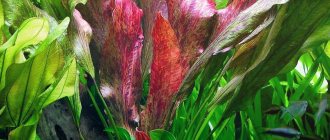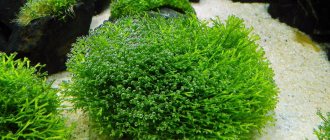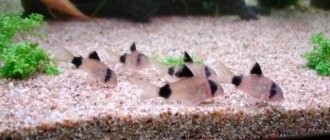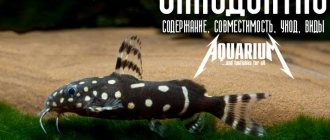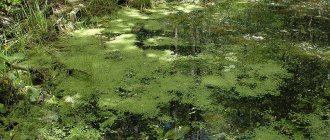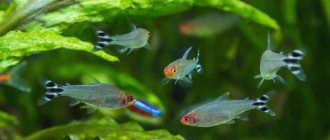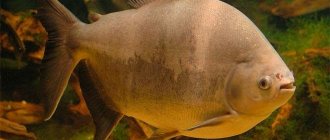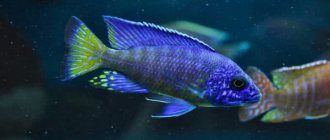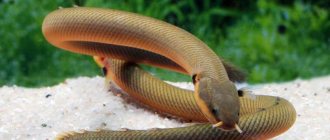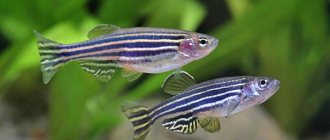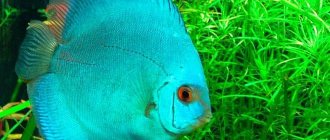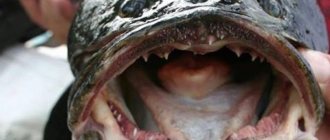Cryptocoryne is one of the most common aquarium plants. The abundance of varieties of this plant is simply amazing - there are countless of them. Here are the main types of Cryptocoryne: Cryptocoryne aponohetonolifolia and Cryptocoryne Blass Cryptocoryne lucidum and Cryptocoryne long-tailed Cryptocoryne elliptical and Cryptocoryne Griffith Cryptocoryne ciliate and Cryptocoryne small Cryptocoryne Nura and Cryptocoryne Petch Cryptocoryne ribbed Cryptocoryne ciliated Cryptocoryne related and Cryptocoryne cordiformis Cryptocoryne cordate and Cryptocoryne siamese Cryptocoryne sipral and Cryptocoryne Thwaitesa
Cryptocoryne auricularis vesicularis Cryptocoryne Walker and Cryptocoryne Versteeg Cryptocoryne Willis and Cryptocoryne Johor
Cryptocoryne Beckett
A beautiful ornamental plant in addition to relatively uncomplicated maintenance conditions. Its leaves are compactly collected in a rosette and have different colors on both sides. Cryptocoryne Beckett is a low plant (up to 12 cm), so it is perfect as a decoration for the foreground and middle ground of an aquarium, forming small thickets. The plant goes well with any aquarium plants.
Genus: Cryptocoryne.
Family: Araceae.
Habitat: marshy ponds of the island of Sri Lanka.
Appearance: herbaceous bush, the stem is not pronounced. The leaves are in the form of a rosette, on low petioles that grow immediately from the root. The leaf shape is heart-shaped. The outer side of the leaf blade is soft olive in color, the inner side is red-brown. In an aquarium, the plant grows no more than 12 cm. The flowers are pale yellow.
Soil: nutritious. Substrate - coarse river sand and/or small pebbles. Before planting, a mixture of boiled peat, clay and charcoal must be added to the bottom of the planting hole. An alternative could be garden soil. The soil should be laid 5-8 cm thick. The plant can be planted in a clay pot and then placed on the bottom of the aquarium, camouflaged in a suitable place. Cryptocoryne does not require regular fertilization.
Lighting: average, direct sunlight is not allowed. If the aquarium lighting is bright, Cryptocoryne Beckett should be hidden in the shade of taller plants. Fluorescent lamps are preferable. The duration of daylight is at least 12 hours.
Water parameters:
Comfortable temperature: 24-28 °C. The plant will be able to withstand temperatures dropping to 20-22 °C, but its growth will slow down significantly.
“Acidity” Ph: neutral or slightly alkaline Ph 7.0-7.5.
Hardness dH: average 8-16 dH.
When water hardness and acidity decrease, “cryptocoryne disease” can develop. A change in these parameters can occur as a result of changing or adding water, so they must be adjusted in advance.
Placement in an aquarium: a tropical aquarium with a volume of over 40 liters is suitable. Cryptocoryne Beckett looks good in the front or center of the aquarium, next to various driftwood and decorative roots.
Reproduction: vegetative, root layering.
How to choose
Due to the large number of varieties of Cryptocoryne, aquarists are often confused, not knowing which variety to give preference to. Experts recommend planting relatively easy-to-care species, which include the following varieties:
- Walker;
- Beckett;
- Parva;
- Undulata.
These subspecies of cryptocoryne tolerate changes in lighting and temperature fluctuations well, and do not require regular water changes. Therefore, caring for them is quite simple.
You should also consider the size of the aquarium and the type of water design you intend to use. For example, in large aquariums, plants such as aponogetonolifolia and cordate cryptocoryne, Albida are perfect for decorating the back walls.
To decorate small aquariums and plant them in the foreground, it is best to give preference to miniature varieties of cryptocoryne, among which are lutea and parva. If you want to decorate the central part of the aquarium, the ideal choice would be Cryptocoryne Beckett, Wendt, Griffith.
When purchasing a specimen for planting, you need to pay special attention to the root system of Cryptocoryne. The rhizome of the plant must be fresh and sufficiently developed.
If there are signs of rot and dryness, it would be better to refuse to purchase a copy. It is also important to carefully examine the leaves - they should be fresh, rich in color, without visible signs of damage or spots of unknown origin.
Cryptocoryne is a very beautiful, original aquarium plant, the wide variation of sizes, shapes and colors of which allows you to create a unique, spectacular design. Despite the fact that cryptocorynes are not too demanding in terms of care, they still require nutritious soil, sufficient lighting, compliance with certain parameters of water hardness and acidity, and temperature conditions. By providing the plant with good care, you can avoid the risks of developing dangerous diseases and enjoy its exquisite beauty for a long time.
Cryptocoryne purpurea
Genus: Cryptocoryne.
Family: Araceae.
Other names: K. Griffith's plant, Cryptocoryne cordate. Depending on the conditions of its maintenance, the plant changes greatly in appearance, so confusion often arises in determining the species.
Habitat: Malaysia.
Appearance: herbaceous bush about 40 cm high. The plant has long oval leaves, collected in a rosette. The leaf plate on the front side is in various shades of green, and on the inside there are many variations of red.
Root system: well developed.
Soil: nutritious, heavily silted, at least 7 cm thick. The composition of the substrate does not matter, since the plant has a powerful root system. When planting Cryptocoryne, clay should be added to the bottom of the hole, adding peat or silt from another aquarium. Periodically, the plant should be fed with mineral fertilizers.
Lighting: Cryptocoryne cordate is not demanding on lighting; natural light is enough for her, and even in the shade she can feel absolutely comfortable. But this does not mean at all that the plant will delight you with its excellent appearance; it will become pale and elongated. It will be much better if Cryptocoryne is provided with good artificial lighting. To do this, you will need fluorescent lamps of the LD and LB type with a power of 0.3-0.4 W / 1 l or incandescent lamps - approximately 1 W / 1 l.
Water parameters:
Comfortable temperature: 24-26 °C, although 20-28 °C is acceptable. When the water temperature drops, the plant's growth slows down.
“Acidity” Ph: slightly acidic or neutral.
Hardness dH: low, 2-10°. As hardness increases, the plant becomes smaller.
Cryptocoryne purpurea is almost not afraid of changing water, only in very bad conditions does it shed its leaves. People rarely get sick with cryptocoryne disease.
The plant feels good in old water; after changing it, it does not grow for some time.
Placement in the aquarium: in the center of the aquarium or in the background near the side walls.
Reproduction: vegetative, root layering.
In a humid greenhouse, Cryptocoryne cordate develops more actively. The plant is transferred to a less humid environment gradually; the water level decreases evenly with the appearance of young leaves. When Cryptocoryne is happy with everything, it grows and blooms quickly.
If you take a plant from a paludarium, then it can be placed in an aquarium without adaptation.
Features of the plant
Cryptocoryne is a bush with an extensive root system. Its height depends on the species and natural conditions and ranges from 4 to 100 cm. Giant cryptocoryne grows up to 130 cm.
From 5 to 15 leaves grow from one hydrophyte root. Their shape is varied: from lanceolate to oval. The surface of the leaves is smooth or pimpled. The colors are also varied: all sorts of shades of green, brownish and red. The name of the plant consists of two parts:
- "crypto" in Latin means "hidden";
- "koryne" means "cob" in Greek.
This is due to the fact that there is a small spadix inside the Cryptocoryne flower. The flower itself is shaped like a flute. Cryptocoryne rarely blooms in aquarium conditions. It is very difficult to achieve its flowering. Usually, aquarium owners only have to admire the beautiful leaves of the plant.
Cryptocoryne Wendt
Cryptocoryne Wendt is a beautiful ornamental plant that is also easy to care for. It is often preferred by both professional aquarists and beginners.
Genus: Cryptocoryne.
Family: Araceae.
Habitat: fast-flowing rivers of Sri Lanka, found in swampy areas. Grows well both on land and under water.
Subspecies and appearance: there are 4 subspecies, the most common are Cryptocoryne Vendta Wendta and Cryptocoryne Wendta brown. The first has the appearance of a herbaceous bush with long leaves in the form of a rosette of olive or dark green color, without a stem. The second one is brown and has longer leaves. The height of the bush is 25-30 cm.
Root system: creeping, long rhizome.
Soil: loose, nutritious, soil grains ranging in size from 2 to 4 mm. Due to the well-developed root system of the plant, the thickness of the soil should be about 5-7 cm. If the soil in the aquarium is sufficiently silted with organic residues, then additional feeding is not needed.
Lighting: diffused, partial shade. Cryptocoryne Wendt does not like bright, abundant lighting; it feels comfortable in the shade of other aquarium plants, and this does not affect the color of the leaves. The length of the day is 12 hours.
Water parameters:
Comfortable temperature: 24-28°C.
“Acidity” Ph: 6.5-7.4.
Hardness dH: medium, 4-10°.
Cryptocoryne Wendta feels good in both old and newly added water.
Placement in an aquarium: the plant can be grown in aquariums of any size. Just remember that in a small reservoir it cannot be grown to the same size as in its natural habitat or a large aquarium. Cryptocoryne Wendt forms dense thickets, so it would look good in the middle of a large aquarium.
Reproduction: vegetative, root layering.
Keeping in an aquarium
Cryptocoryne should be kept in water with a temperature of 24-28 ° C and an acidity pH of 6.5-7.4. Suitable lighting is 0.4-0.5 W per liter. The thickness of the soil in which the plant is planted must be at least 5 cm. After this, you should not replant it more often than once a year, cryptocorynes are difficult to tolerate replanting, and it can take weeks to get used to the environment. In an aquarium with Cryptocoryne, a weekly change of 1/4 of the water volume is necessary.
With a sharp change in maintenance conditions (temperature, lighting, water parameters), often in the winter season, and sometimes for no apparent reason, the plant can develop the so-called “cryptocoryne disease”: the leaves suddenly become soft and decompose. In this case, you need to save the rhizome: change the water, remove dirt from the soil. Often the plants get better. The cause of this disease has not yet been clarified, but the disease can be transferred to another aquarium during transplantation. The species most susceptible to this disease are cryptocoryne Wendt, Beckett and related.
Cryptocoryne balance
Cryptocoryne Balance is a whimsical plant that needs constant attention and care. But if you know the peculiarities of its development, the time required to care for it can be minimized. In gratitude for your care, Cryptocoryne Balance will delight you with lush emerald foliage and turn your home pond into a real tropical garden.
Genus: Cryptocoryne.
Family: Araceae.
Habitat: along the shores of flowing water bodies in Southeast Asia.
Appearance: Herbaceous bush with long narrow leaves on short petioles. The width of the bush is from 15 to 20 cm, the height is about 60 cm. The leaves are transversely striated, corrugated. The leaf blade can be of a variety of colors.
Soil: nutritious. The soil may consist of a mixture of sand and small pebbles, as well as a small amount of clay, charcoal, dried peat (you must remember that this can increase acidity). Soil thickness - 5 cm. Cryptocoryne Balance grows well in warm soil, so it is important to provide a bottom heater or filter that draws water through the soil. You should also remember that the plant does not like transplants; you must immediately decide on the most suitable and permanent place for it.
Lighting: good, diffused. The total power of fluorescent lamps should be 0.5 W per 1 liter of water.
Water parameters:
Comfortable temperature: 22-28°C.
“Acidity” Ph: neutral, 7.
Hardness dH: soft or medium, optimally 7 – 15°.
It is very important to monitor the acidity of the water. Its decrease threatens the appearance of “cryptocoryne disease.” Once a week you should add settled water to the aquarium, but at the same temperature, hardness and acidity as in the aquarium.
Placement in an aquarium: for Cryptocoryne Balance, it is best to provide a high, spacious aquarium, because with proper care it reaches 60 cm in height.
Reproduction: vegetative, root layering.
General information
The plant is native to tropical regions of Asia . The algae can be found both in stagnant water of lakes and ponds, and in flowing river water. The small bush is formed by 5–15 leaves on a pronounced petiole.
The leaf blades are long, oval, sometimes pointed at the tip, their surface is covered with small pimples.
The color of the plant depends on the amount of light falling on it: for example, in a shaded pond the color of the leaves will be almost red, and in brightly lit waters it varies from olive to brown-green.
Cryptocoryne has an originally arranged inflorescence . The flower's veil is a long tube that widens towards the bottom; inside it is a spadix. This part is separated by a valve. It is noteworthy that the handset is waterproof.
The root system of the algae is superficial.
Cryptocoryne yellow
Cryptocoryne yellow is an unpretentious plant that is resistant to changes in the external environment, but at the same time has a beautiful appearance. Therefore, it has deservedly gained popularity among many aquarists.
Genus: Cryptocoryne.
Family: Araceae.
Habitat: Sri Lanka.
Appearance: herbaceous bush, leaves collected in a rosette, no stem. Cryptocoryne yellow grows to a height of about 20 cm. The color of the leaves can vary depending on the lighting: from green with a longitudinal red vein to cherry.
Soil: old, heavily silted. If the soil is new, then when planting the plant, a small amount of clay should be placed at the bottom of the hole. Substrate - small pebbles or coarse sand. Soil thickness – 5 cm.
Lighting: the plant feels good both with prolonged exposure to the shade and in bright light. For artificial illumination of Cryptocoryne yellow, you can use fluorescent lamps of the LB type at a rate of 0.5 W/l or incandescent lamps - 1.5/l. The ideal option is to combine these illuminators. The better the lighting, the brighter and more beautiful the color of Cryptocoryne. Daylight hours are from 8 to 16 hours.
Water parameters:
Comfortable temperature: 24-28°C.
“Acidity” Ph: 6.8-7.5.
Hardness dH: 4-16°.
The plant does not need regular water changes. Resistant to cryptocoryne disease.
Placement in the aquarium: due to its small size, Cryptocoryne yellow is perfect for decorating the foreground and middle ground of the aquarium.
Reproduction: vegetative, root layering. The daughter plants are strong and develop quickly.
Cryptocoryne yellow is also grown in a greenhouse. At the desired temperature and good lighting, the plant can delight you with its flowering. The terrestrial form of Cryptocoryne yellow is less decorative than the aquatic one.
Bloom
The inflorescences of the algae have a small shape. They have an unusual structure that distinguishes them from other bottom plants.
It does not bloom actively and reluctantly.
In order to provoke this process artificially, it is necessary to provide bright twelve-hour lighting, as well as increase the water temperature by a couple of degrees. After a few months, the algae will show rare and beautiful flowers.
- There is another way to influence the plant. To do this, you will need a small flower pot, the diameter of which will not exceed 7-8 cm.
- Garden soil is poured into the bottom. It is important that it does not contain lime.
- Peat is laid on top and the plant is planted.
- The soil is well filled with water, after which a pot is placed in it.
- Ideally, it would be possible to heat the soil using a bottom heater.
Cryptocoryne Neville
Cryptocoryne Neville is a low-growing plant that is very resistant to any changes in the external environment.
Genus: Cryptocoryne
Family: Araceae
Habitat: marshy ponds of the island of Sri Lanka.
Appearance: the plant is a representative of low-growing forms of cryptocorynes, its height does not exceed 20 cm. There are varieties with wide and narrow leaves. The foliage of Cryptocoryne Neuville is round at the base and slightly pointed at the top, up to 6 cm long. On the outside the leaf is brighter, rich green in color, and on the inside it is pale green. The leaf blade is slightly shorter than the stem. The leaves are smooth and hard.
Root system: very well developed. The roots of the plant are white, fleshy, knotty, fragile, but strong. If desired, you can very carefully pull the cryptocoryne and pull it out of the soil with the root intact.
Soil: clay or peat. Soil thickness is up to 5 cm. With a lack of nutrients, plant growth slows down.
Lighting: diffused, partial shade.
Water parameters:
Comfortable temperature: 22-30°C.
“Acidity” Ph: 7-8.
Hardness dH: no more than 12°.
Aquarium Placement: Ideal for the foreground.
Reproduction: vegetative, root layering. The reproduction process occurs slowly, as does the development of the plant itself.
Planting and propagation
Cryptocorynes grow slowly and do not like frequent transplants , so the place for the hydrophyte must be chosen carefully in the aquarium so as not to move the bushes later.
Cryptorina is propagated vegetatively, since it is difficult to achieve flowering at home.
Reproduction occurs:
- dividing the bush;
- root layering.
What plants can be planted with cryptocoryne?
Perhaps, problems can arise only in the vicinity of Vallisneria, since it prefers more shaded bodies of water.
But in general, the problem of a “complex” neighborhood can be easily solved by competent zoning and planting in accordance with it.
View this post on Instagram
Posted by @katina_happy_succulent March 3, 2022 at 10:36 PST
Cryptocoryne reverse spiral
Cryptocoryne reverse spiral is a very common, relatively unpretentious, beautiful aquarium plant.
Genus: Cryptocoryne
Family: Araceae
Habitat: Hindustan Peninsula and southeast Indochina.
Appearance: herbaceous bush about 50 cm high, devoid of stems. The leaves are narrow and long, wavy, depending on the conditions they have different colors - from dark green to olive. Under favorable conditions, the plant forms bright, dense thickets.
Root system: horizontally located rhizome.
Soil: rich in organic matter and minerals. Soil thickness – 5 cm.
Lighting: bright. Moderate lighting is allowed, but the plant will lose its decorative effect, the leaves will be pale and even, without waves. The best option for lighting: an LB fluorescent lamp in combination with an incandescent lamp, the total power of which should be 1.0-1.2 W per 1 liter of water. Daylight hours are at least 12 hours.
Water parameters:
Comfortable temperature: 24-28°C.
“Acidity” Ph: 7.0-8.2.
Hardness: dGH 12-16° (dKH 6-8°).
When the hardness decreases, it is difficult to provide normal conditions for the growth and development of the plant, and there is a danger of the appearance of “cryptocoryne disease.”
Aquarium Placement: Cryptocoryne reciprocalis should be provided in a large aquarium with a tropical climate and placed near the back wall.
Reproduction: vegetative, root layering.
Cryptocoryne reverse spiral can also be successfully cultivated in a paludarium or greenhouse at a temperature of 26-28 ° C and bright light. At the same time, it will grow even faster and bloom, but its leaves will become shorter.
Water
The plant grows along the banks of warm tropical reservoirs. This means it needs appropriate water temperature. The minimum temperature must not be lower than 22 °C. Otherwise, the cryptocoryne bushes will begin to get sick and will soon die.
The ideal indicator is in the range from 24 to 28 °C.
Before purchasing, be sure to consider whether this temperature will be comfortable for other inhabitants of the aquarium.
Water hardness should also be no higher than 10 – 11° dGH. Acidity is measured individually. It is important that the indicator is normal.
Cryptocoryne pontederifolia or Cryptocoryne pontederifolia
Moderately whimsical and quite popular aquarium plant.
Genus: Cryptocoryne
Family: Araceae
Habitat: freshwater plant of the island of Sumatra.
Appearance: herbaceous bush, without stem. The leaves of Cryptocoryne are wide, heart-shaped, pointed at the tip, united by a rosette. The leaf blade is light green on the outside, and red-pink on the inside with veins. The leaves are much shorter than the petioles. The height of the bush is 20-25 cm.
Root system: well developed, represented by a horizontal rhizome.
Soil: nutritious, rich in organic matter, with the addition of clay and peat. Soil thickness is 6-7 cm. During the period of active growth, it is advisable to feed the plant with nitrogen fertilizers.
Lighting: bright. Moderate lighting is allowed, but the plant will lose its decorative effect, the leaves will be pale and elongated. The best option for lighting: an LB fluorescent lamp in combination with an incandescent lamp, the total power of which should be 1.0-1.2 W per 1 liter of water. Daylight hours are 12 hours.
Water parameters:
Comfortable temperature: 22-28 °C.
“Acidity” Ph: 6.5-7.5.
Hardness dКH: 6–20 °.
It is necessary to monitor the acidity level of the water, as the plant is susceptible to “cryptocoryne disease”.
Placement in the aquarium: Cryptocoryne pontederifolia should be provided in a tropical aquarium and it is better to place it in the middle of the pond.
Reproduction: vegetative, by rhizome layering.
Cryptocoryne pontederifolia is a plant that prefers marshy areas, so it does well in a humid greenhouse and tropical paludarium.
Possible problems
Cryptocoryne does not tolerate transplants and sudden changes in habitat. Therefore, it is important to immediately decide on the location of the plant, and also to ensure that acidity, water hardness, temperature and lighting are maintained at an even level.
Otherwise, the risk of developing cryptocoryne disease increases significantly. This disease affects the leaf blades of the plant, making them soft, pale, and thin. As the pathological process progresses, the leaves of Cryptocoryne completely dissolve.
When the first symptoms characteristic of cryptocoryne disease are detected, it is recommended to thoroughly clean the soil, completely replace the water in the aquarium, and remove affected specimens and damaged leaf blades.
The following factors can trigger the development of cryptocoryne disease:
- use of poor quality water;
- introduction of sick fish that infect aquarium crops;
- changing the aquarium design with accompanying plant transplantation.
The plant tolerates hard water and insufficient lighting. However, it should be remembered that with a lack of light, the leaves fade and lose their beauty.
Breeding
Reproduction of individual species of cryptocorynes is almost impossible. Therefore, you should build on the characteristics of your species.
If this is possible, use the vegetative method.
- To do this, a new shoot that has just appeared is cut from the mother bush, at the moment when it has already gained strength and up to six leaves have appeared on it.
- After this, it is carefully isolated and transplanted into a separate tank.
- When the plant takes root, it can be introduced into a new aquarium.
Fact!
Reproduction through seeds is a very complex and painstaking process that rarely gives results.
Kinds
The genus Cryptocoryne includes about ten species of aquarium plants.
- Cryptocoryne beckettii. It is distinguished by its small size and unpretentious nature of its contents.
- Related Cryptocoryne (Cryptocoryne affinis). It has a characteristic foliage color: the inside of the leaf is dark red.
- Cryptocoryne pontederiifolia. The leaves have a round shape.
- Cryptocoryne cordata. It has a leaf shape in the shape of a heart.
- Cryptocoryne cordata Griffith “Rosanervig“. The leaves are colored with long light stripes.
Benefits of growing
good for growing in aquariums because it is not damaged by various pests and fish. This is due to its bitter taste, which apparently does not attract other inhabitants to eat it.
In addition, the plant adapts well to various conditions and chemical properties of water. It is perfect for decorating any aquarium or terrarium, where it will feel great, even rising above the water.
Fertilizer
Like any other plant, cryptocoryne needs nutrition for enhanced growth. Aquarists advise using solid fertilizers that can easily be placed in the soil. Their peculiarity is that they do not dissolve in water and do not pollute it.
In some situations, it is possible to use liquid fertilizer solutions. The main thing is that they are based on distilled water. Macro and microelements are dissolved inside, useful not only for plants, but also for all inhabitants of the aquarium.
Reviews
Cryptocoryne will become a real decoration of the aquarium, saturating the water with oxygen. The algae will give the fish a place to hide and will become a stunning decorative element, effectively emphasizing the parameters of the tank. In order for the plant to be happy for as long as possible, it is important to find the right approach to caring for it.
Would you like to purchase Cryptocoryne for your own aquarium? Share in the comments!
Description
According to the scientific classification, the plant species belongs to the domain of eukaryotes, the plant kingdom, the flowering division, the monocot class, the order of Alismaceae, the aroid family, and the genus Cryptocoryne. The Araceae family includes more than three thousand species that live in tropical and subtropical areas. Most species grow on land. The most popular species of this family include:
- Genus Lagenandra Dalzell.
- Genus Aglaonema (Aglaonema Schott).
- Genus Anubias (Anubias Schott).
- Genus Cryptocoryne Fisher ex Reichenbach.
The plant is shown in the video
https://www.youtube.com/watch?v=1-iUIxCZUzw
Fish
Cryptocoryne gets along well with your favorite fish species. Therefore, there is no need to select neighbors. However, some active species of cichlids often behave too aggressively during the spawning period and can tear up the soil. This releases the roots, disrupts the nutrition process and can cause the death of the plant.
Cryptocoryne does not suffer from the fact that some species, for example, scrofula, can feast on the leaves. This stimulates increased growth and does not cause serious damage.
